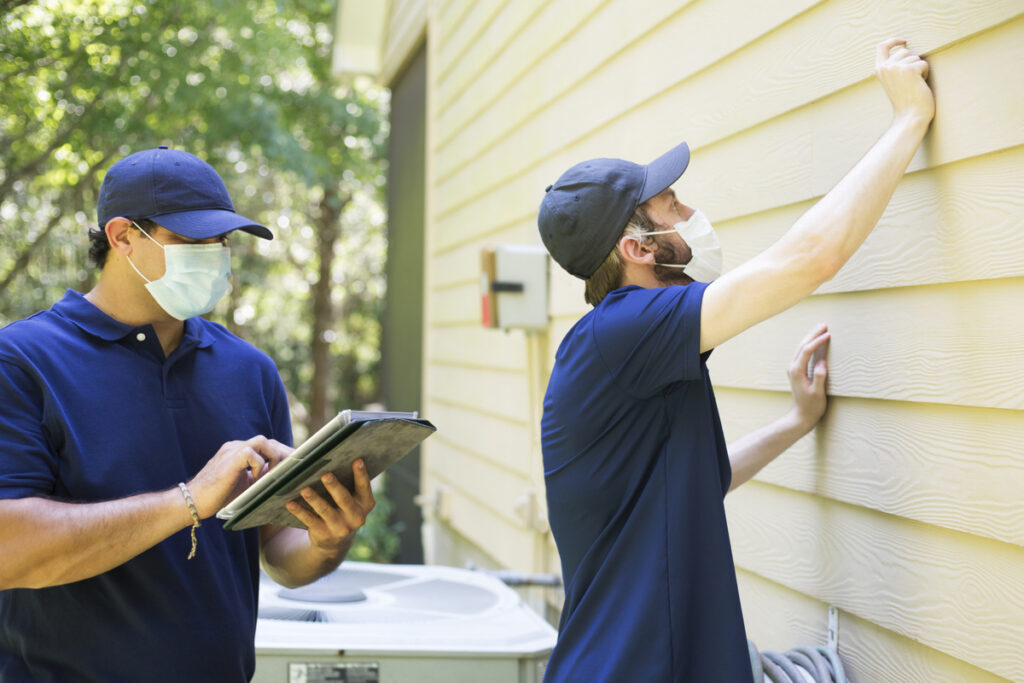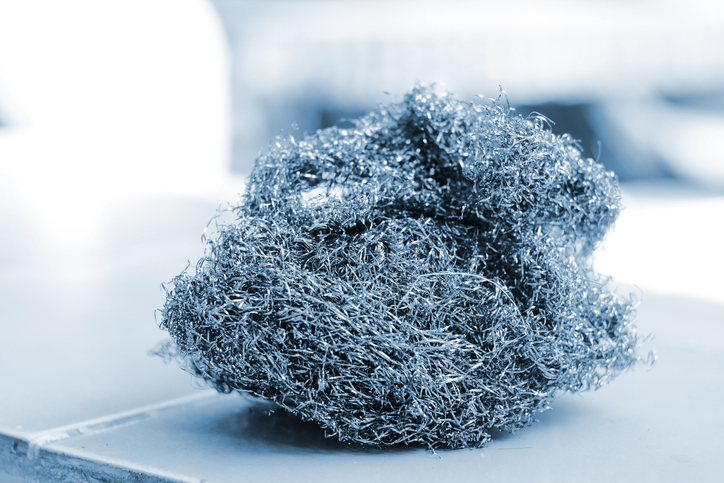Glue traps are designed to be placed along the pathways and areas frequented by mice, luring them with the scent of bait or simply relying on their natural curiosity. While glue traps can be effective in capturing mice, it is important to understand their proper usage, potential limitations, and ethical considerations.
Glue traps for mice are a type of pest control device designed to capture and immobilize mice. They consist of a flat board or sheet coated with a sticky adhesive substance that is highly adhesive. These traps are commonly used in homes, warehouses, and other locations to catch mice, especially when traditional methods like snap traps or poisons may not be suitable or desired.

How Do Glue Traps For Mice Work?
Glue traps work by taking advantage of the sticky adhesive substance applied to their surface. When a mouse comes into contact with the glue trap, its fur, feet, or tail can become stuck to the adhesive. The powerful grip of the glue prevents the mouse from escaping, effectively immobilizing it in the trap.
Glue traps are typically placed along the paths or areas where mice are likely to travel, such as walls, corners, or near potential food sources. They are usually pre-baited with scented attractants or food to lure the mice onto the trap.
Once a mouse steps onto the glue trap, it becomes entangled in the adhesive, making it difficult for the rodent to move or free itself. The sticky surface of the trap hinders the mouse’s ability to escape, resulting in the rodent being trapped until discovered by a human or until it succumbs to exhaustion or dehydration.
While glue traps can be effective in capturing mice, it’s essential to regularly check the traps to ensure any captured mice are promptly removed to prevent prolonged suffering. Additionally, proper disposal methods should be followed to ensure the trapped mice are handled humanely and in accordance with local regulations.
The Pros And Cons Of Using Glue Traps
Glue traps have been widely used as a method of rodent control and can be effective in capturing mice when properly placed in areas where mice are known to traverse. The sticky adhesive surface of the trap immobilizes the mouse upon contact, preventing its escape. This makes glue traps particularly useful in situations where other trapping methods may be challenging or ineffective, such as when dealing with shy or wary mice. However, it is important to note that the success of glue traps depends on proper placement and using multiple traps in strategic locations to increase the likelihood of catching mice.
Pros And Cons Of Using Glue Traps For Mice
The pros include their simplicity and ease of use, as glue traps require minimal setup and do not rely on complex mechanisms. They are also cost-effective compared to other trapping methods. Glue traps are non-toxic and pose less risk to humans and pets than certain chemical rodenticides. Additionally, they allow for easy monitoring of the trapped mice, which can aid in assessing the extent of the infestation.
However, there are also cons to consider. One major concern is the inhumane nature of glue traps. Once caught, mice may struggle to free themselves from the adhesive, leading to prolonged suffering and potential injury. Furthermore, if not checked regularly, trapped mice may die from starvation, dehydration, or stress. Glue traps also do not differentiate between target and non-target species, meaning that other small animals or even birds may accidentally get trapped, posing ethical concerns. Other animals that may get trapped include rats, spiders, cockroaches, and scorpions.
Purchasing And Using Glue Traps
When it comes to dealing with mouse infestations, glue traps have emerged as a popular choice for catching and controlling these pesky rodents. By understanding the various aspects involved in purchasing and using glue traps, individuals can effectively address mouse infestations and take proactive steps toward rodent control.
Different Brands Of Glue Traps For Mice
There are numerous manufacturers and brands that produce glue traps, each with its own unique features and specifications. Some well-known brands include Victor, Tomcat, Catchmaster, d-CON, and Pest-Stop. It is essential to research and compares the different brands to determine which one best suits your needs, taking into consideration factors such as trap size, adhesive strength, and any additional features or enhancements offered by specific brands.
Where To Buy Glue Traps For Mice And Their Cost
Glue traps for mice can be purchased from a variety of sources at different price points. They are commonly available at hardware stores such as Home Depot and Lowe’s, where prices range from $2 to $10 per trap, depending on the brand and features. Online retailers like Amazon also offer a wide selection of glue traps, with prices typically ranging from $3 to $15 per trap, depending on the quantity and brand. Additionally, local pest control supply stores may carry glue traps, often offering competitive prices. It is advisable to compare prices across these different sources to find the best deal while considering factors such as convenience and availability.
How To Properly Use Glue Traps For Mice
To ensure the effective and humane use of glue traps for mice, it is important to follow specific steps. Begin by carefully reading and understanding the instructions provided by the manufacturer to familiarize yourself with any specific guidelines or precautions. When handling the traps, it is advisable to wear gloves to protect your hands from the sticky adhesive and prevent potential skin irritation.
Next, identify areas where mice are likely to travel, such as along walls, near entry points, or where signs of mouse activity are evident. Place the glue traps perpendicular to the wall or in the path commonly used by mice. It is essential to avoid obstructions that could deter mice from accessing the traps, so clear any debris or barriers that may block their path. Regularly inspect the glue traps, preferably once a day in the morning or evening when mice are most active, to monitor any trapped mice.
When removing trapped mice, dispose of them promptly and in accordance with local regulations or guidelines. Some municipalities recommend placing the trapped mice in sealed bags before disposing of them in outdoor trash bins or contacting local authorities for proper disposal methods. By following these steps, you can ensure the proper use of glue traps for mice, increasing their effectiveness while maintaining a humane approach to rodent control.
How To Choose The Best Location To Place Glue Traps For Mice
The ideal locations for placing glue traps are typically along the pathways commonly used by mice, such as baseboards, corners, or areas where mouse droppings or gnaw marks are visible. Mice tend to follow walls and travel near edges, so placing traps perpendicular to the wall can increase the chances of trapping them. It is important to avoid blocking the trap’s access with objects or obstructions that may deter mice from approaching or stepping onto the adhesive surface.
Is There Any Specific Bait That Should Be Used With Glue Traps For Mice?
While some glue traps may come pre-baited, others may require the addition of bait to attract mice. Common baits for glue traps include food items that mice find enticing, such as peanut butter, chocolate, or small pieces of cheese. It is important to note that baiting glue traps is not always necessary, as mice may be naturally curious and investigate the traps regardless. However, if bait is used, it should be placed near or on the trap without obstructing the adhesive surface. It is recommended to use small amounts of bait to prevent mice from simply consuming the bait without triggering the trap.
Safety And Legality Concerns
Are Glue Traps Safe For Children And Pets?
Glue traps can pose risks if not handled and placed properly. The adhesive surface of the traps can stick to skin, fur, or feathers, causing discomfort and potential injury. To ensure safety, it is crucial to keep glue traps out of reach of children and pets. Place them in areas inaccessible to curious hands or paws. Additionally, consider using alternative methods or enclosed traps specifically designed to minimize the risk of accidental contact for households with young children or pets.
Are Glue Traps For Mice Legal In All States And Countries?
While glue traps are commonly used, it is essential to be aware of any legal restrictions or regulations regarding their use. Laws and regulations related to pest control methods can vary from state to state and country to country. Some jurisdictions may have specific guidelines regarding the use of glue traps, including restrictions on their size, placement, or the types of animals they can target. In the United States, the regulations regarding glue traps vary from state to state. It is advisable to research and comply with the local laws and regulations in your area to ensure the legal and responsible use of glue traps.
Can Glue Traps For Mice Be Used In Commercial Establishments?
Many commercial establishments, such as restaurants, warehouses, and offices, may experience mouse infestations. However, the use of glue traps in commercial settings may be subject to additional considerations and regulations. Certain industries, such as food handling or healthcare, may have specific guidelines or restrictions on the use of glue traps to ensure sanitation and safety standards. It is crucial to consult with local health departments, regulatory bodies, or pest control professionals to determine the appropriate and legally compliant methods of rodent control for commercial establishments.
Life Cycle Of A Glue Trap
How Often Should Glue Traps For Mice Be Replaced?
The effectiveness of glue traps can diminish over time due to dust, debris, or the adhesive losing its stickiness. It is generally recommended to replace glue traps every few days or when they become soiled or filled with trapped mice. Regularly checking the traps and replacing them as needed ensures maximum trapping efficiency.
Are Glue Traps For Mice Reusable?
Glue traps are typically designed for single use and are not intended to be reused. Once a mouse is caught in the adhesive surface, the trap’s effectiveness decreases, and attempting to reuse it may be less successful in catching additional mice. It is more effective and hygienic to dispose of used glue traps and replace them with fresh ones.
What To Do With A Mouse Caught In A Glue Trap?
When a mouse becomes trapped in a glue trap, it is essential to handle the situation with care and consideration for the animal’s well-being. It is crucial not to touch or remove the mouse forcefully, as this can cause unnecessary harm or distress. Instead, approach the trapped mouse with patience and compassion.
One humane approach to releasing the mouse involves using vegetable oil or a similar lubricant to gently free it from the adhesive surface. Apply the oil around the areas where the mouse is stuck, taking care not to harm or injure the animal in the process. Once the mouse is freed, it is recommended to release it outdoors in a safe and suitable location away from your home to prevent re-entry or any potential harm to both the mouse and your property. By following these humane practices, individuals can minimize harm and promote the ethical treatment of mice caught in glue traps.
How To Safely Dispose Of Used Glue Traps?
It is important to handle used glue traps with caution to prevent any accidental contact with the adhesive. Seal the used glue traps in a plastic bag or container to contain any potential odors and prevent animals from accessing them. Dispose of the sealed traps in accordance with local regulations or guidelines. Some areas may allow for disposal in regular trash bins, while others may require specific disposal methods, such as contacting local authorities or utilizing designated waste disposal facilities.
How Long Does It Take For A Mouse To Die In A Glue Trap?
The length of time it takes for a mouse to perish after being trapped in a glue trap can vary based on several factors. The adhesive strength of the trap, the size and weight of the mouse, and environmental conditions all play a role. In some cases, a mouse may die within a matter of hours or days of becoming trapped. However, it is important to note that glue traps are not considered a humane method of pest control. The prolonged suffering and distress caused to the trapped mouse can be a source of concern. It is recommended to promptly address mouse infestations using more humane methods and to take preventative measures to deter mice from entering your living space in the first place.
Can Mice Escape From Glue Traps?
While glue traps are designed to be highly adhesive and effective in capturing mice, there is a small chance that some mice may be able to free themselves from the traps. Mice with smaller body sizes or lighter weights may have a slightly higher chance of escaping by pulling or gnawing off body parts. However, it is crucial to note that even if a mouse manages to escape, it may still suffer injuries or trauma in the process. Regularly checking and replacing glue traps helps maintain their effectiveness and prevents any potential escape or prolonged suffering for trapped mice.
Ethical Concerns And Alternatives
By addressing the ethical concerns associated with glue traps, acknowledging the suffering inflicted upon mice, and exploring the availability of humane alternatives, this section provides insights into the importance of considering ethical principles in rodent control practices.
Do Glue Traps Cause Mice To Suffer?
Glue traps are considered inhumane because they subject mice to distress and suffering. Once trapped, mice may struggle to free themselves, resulting in injuries, broken limbs, or torn fur. The adhesive nature of the trap can cause significant physical and psychological distress for the trapped mouse, leading to prolonged suffering until the situation is addressed.
What Are The Ethical Concerns Related To Using Glue Traps For Mice?
Ethical concerns surrounding the use of glue traps for mice revolve around the principle of minimizing unnecessary harm and treating animals with compassion. The prolonged suffering inflicted upon mice caught in glue traps conflicts with the principles of humane treatment. Using traps that cause avoidable harm raises moral questions and highlights the need for alternative methods that prioritize the welfare of mice while effectively addressing rodent control.
Are There Humane Alternatives To Glue Traps For Mice?
Fortunately, several alternatives exist that allow for effective rodent control while minimizing harm to mice. Some humane alternatives include live catch-and-release traps, electronic traps that deliver a quick and humane electric shock, and integrated pest management techniques that focus on preventative measures such as sealing entry points and removing attractants. These alternatives prioritize the safe capture and release of mice or employ methods that swiftly and humanely eliminate them without causing unnecessary suffering.
Comparing Glue Traps And Snap Traps
When comparing glue traps and snap traps, it is crucial to consider factors such as the desired outcome (capture or kill), ethical considerations, ease of use, and personal preferences. Choosing the most appropriate method depends on individual circumstances and the desired balance between effectiveness, humaneness, and practicality.
Glue Traps
These traps consist of flat boards or trays coated with a sticky adhesive substance. When a mouse ventures onto the trap, its paws become stuck to the adhesive surface, effectively immobilizing the rodent. Glue traps are usually constructed using materials such as cardboard, plastic, or similar substances. They are designed to be non-toxic, ensuring that they do not pose a direct threat to human or animal health.
The primary purpose of glue traps is to capture mice alive. However, this trapping method often leads to prolonged suffering for the trapped animals. Once stuck, the mice may struggle desperately to free themselves, resulting in injuries such as broken limbs, torn fur, or other physical harm. Unfortunately, the adhesive nature of the trap hinders the mouse’s ability to escape, prolonging its distress and suffering. The trapped mouse may experience fear, stress, and exhaustion while trying to break free from the strong grip of the adhesive.
Snap Traps
Snap traps, often referred to as spring-loaded traps, are widely used as an effective method for capturing and killing mice. These mechanical devices consist of a metal bar attached to a spring mechanism. The trap is set by latching the metal bar in an elevated position, creating tension in the spring.
When a mouse is enticed by the bait placed on the trigger mechanism of the snap trap, it applies pressure or attempts to take the bait, causing the metal bar to release abruptly. The released tension in the spring propels the metal bar downward with significant force, swiftly and humanely killing the mouse.
The design of snap traps ensures a quick and efficient kill, minimizing the suffering experienced by the trapped mice. Unlike glue traps, snap traps deliver an instantaneous and lethal blow, avoiding the prolonged agony associated with adhesive trapping methods. Once the trap is triggered and the mouse is killed, the trap can be reset for future use.
Conclusion
While glue traps are designed to capture mice alive, they often result in prolonged suffering and distress for the trapped animals. The sticky adhesive surface immobilizes the mice, leading to injuries and physical harm as they struggle to break free. This raises significant ethical concerns regarding the treatment of animals and the promotion of humane pest control practices. As awareness grows about the welfare of animals, individuals and organizations are advocating for more humane alternatives to glue traps that prioritize minimizing harm while effectively addressing mouse infestations. By considering the ethical implications and exploring humane alternatives, we can adopt pest control methods that align with our values of compassion and responsible stewardship of the natural world.
Using glue traps for mice is a commonly employed method of rodent control. These traps consist of flat boards or trays coated with a sticky adhesive substance that captures mice when they come into contact with the surface. While glue traps are designed to capture mice alive, their use raises ethical concerns due to the prolonged suffering and distress they can cause to the trapped animals. This has led to a growing debate surrounding the ethical implications of using glue traps and has prompted the exploration of more humane alternatives. Understanding the benefits and ethical considerations of using glue traps is essential for making informed decisions about pest control practices.




